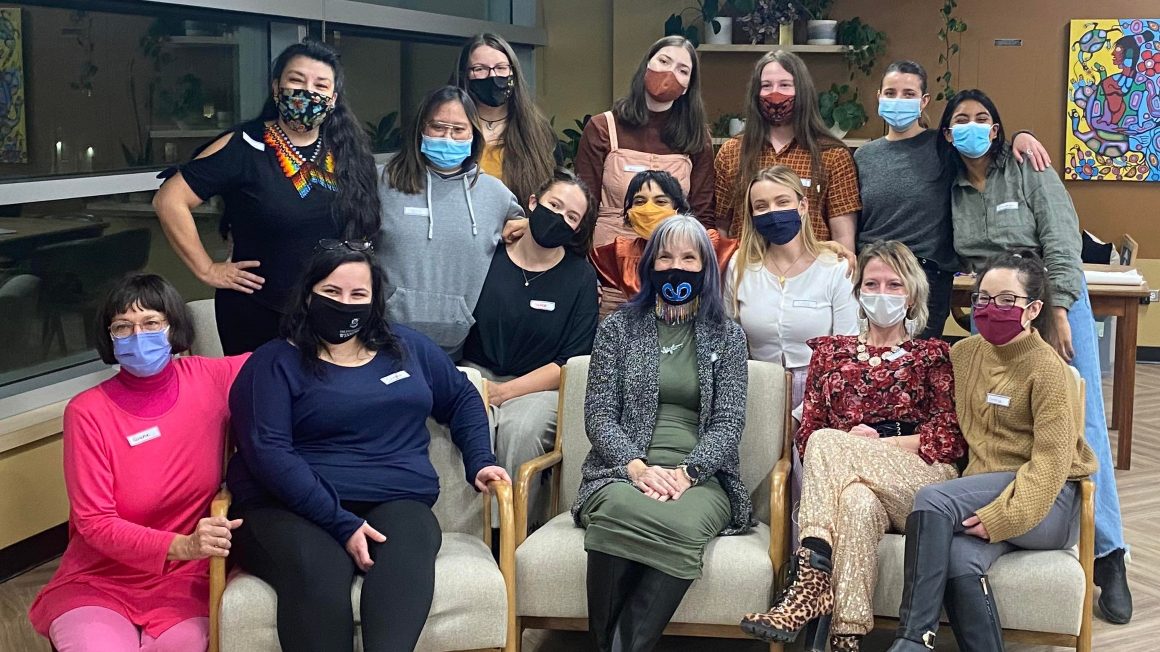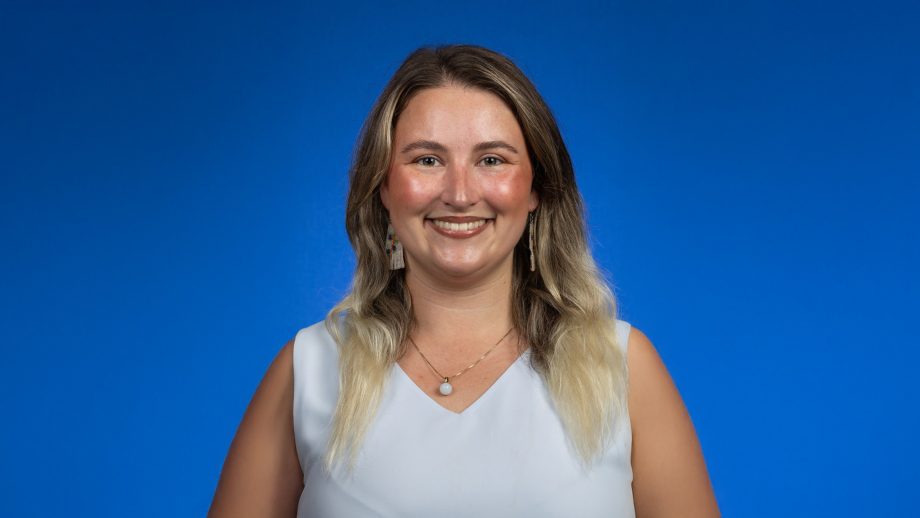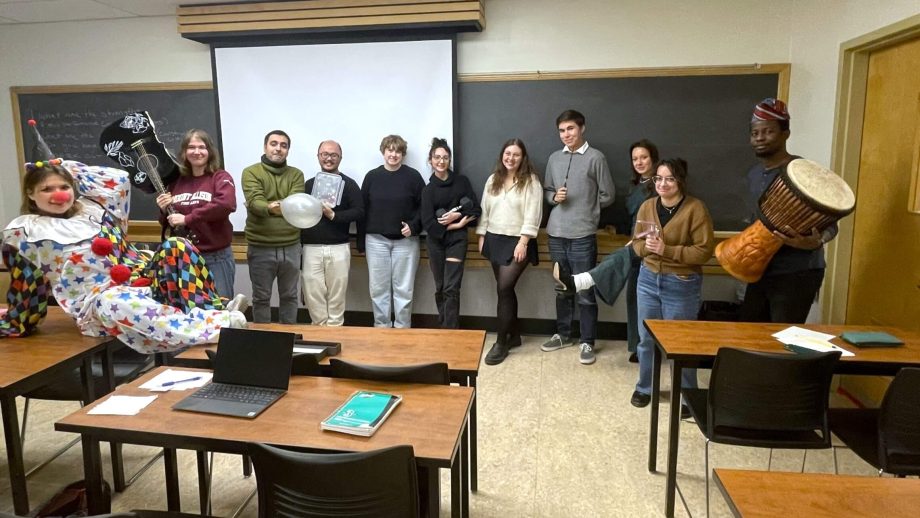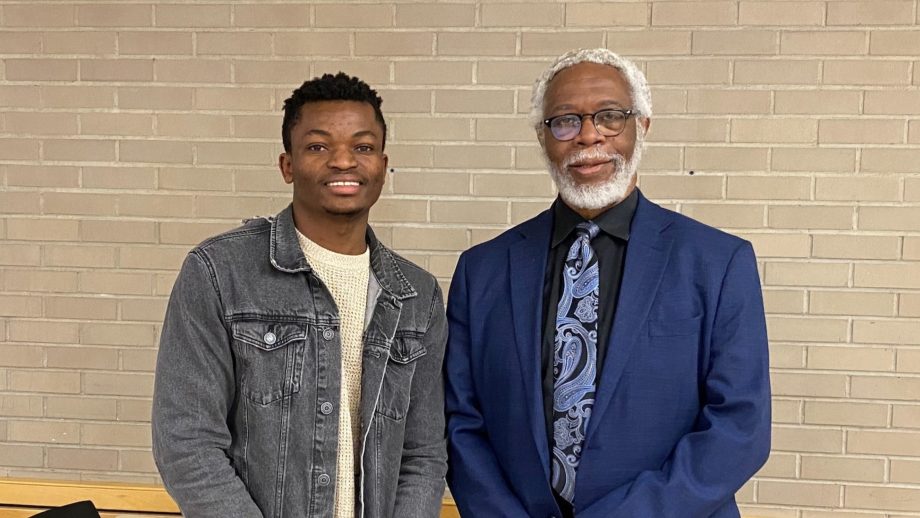When looking at a kitchen table, what most see is its construction, four legs and a top. Ask UWinnipeg alum and faculty member Dr. Cathy Mattes (BA 95), however, and she will tell you a kitchen table is far greater than its parts. What she sees is a site of knowledge transmission, a gathering place, a space for dialogue and discussion and engagement. A kitchen table, she will tell you, is the heart of the home.
“They’re very energized locations,” she said. “Lots of noise, laughter, and a whole lot of learning, in a good way.”
Her understanding of what the kitchen table represents is among the knowledge she passed on to her students through the innovative and experiential course Miyeu Pimaatshiwin, Beading, and Métis Kitchen Table Talk.
Created by Mattes and open to undergraduate and graduate students for the first time last fall, the course allowed Mattes, a Michif curator, writer, and associate professor in the Department of History of Art, to bring her culture into the classroom. The course also drew directly from Mattes’ PhD, which she completed last year and centred on Métis kitchen table talk gatherings and core Métis or Michif knowledge systems.
A way to a good life
Central to the course teachings was Miyeu Pimaatshiwin, which means the way to a good life, or naming how one leads a good and enriching life in the Michif language. Mattes said the concept set the tone for the course, opening space for dialogue and joint learning while maintaining focus on Métis culture, history, and art practices. Of Miyeu Pimaatshiwin, Mattes said: “It was a knowledge that a Michif knowledge keeper shared with me while I was working on my PhD. It’s a value system. It gives guidance and is meant to encourage folks to find the best way for them to live in a good way.”
It was by Mattes’ design these lessons were delivered to students in a variety of ways. For example, included in the course were reviews of several pieces of literature by BIPOC scholars which focused, among other things, on the methodology of gathering and the importance of the kitchen table. But a focal point of the course was beading, as the students were taught four different techniques and created a number of pieces. Notably, students were asked to read the 94 calls to action for Truth and Reconciliation then bead a piece corresponding to the readings that was later gifted to an individual the students felt would benefit from the artwork.
“It gives you an entry point into talking about the more theoretical side of things and to understand people’s really personal histories, because you get to do the actions that so many people did for so many years and continue to do,” said Grace Braniff, who is in the Master of Arts in Cultural Studies program. “You get to learn through the physical actions.”
Creating space for conversation
And many of those physical actions took place in the same way a traditional kitchen table gathering would. Instead of classroom seating, students gathered in the Aabijijiwan New Media Lab. Undergraduate student Sierra Hill, who will graduate in the spring with a Bachelor of Arts (Honours) in History, said the setup nurtured critical thinking and discussion.
“You’re understanding every person is on the same level, there for discussion, and not there to look down on you,” she said. “That helps with comfortability for students, to really want to share. They’re all able to see each other, connect with one another, have broader discussions.”
It was indeed Mattes’ intention to create such an environment. By and large, she said, university settings require students to sit at a desk facing the front of the room and learn that way, and even if seminars slightly alter that style of learning, there remains a particular structure. “But when you’re thinking creatively, how you put yourself into something, how you’re going to honour a culture that is your own or different from your own in a good way and you’re sitting around together – sometimes in quiet or talking and laughing, but certainly learning together – it’s a completely different mindset,” Mattes added.
In keeping with that theme, the course’s final assignment saw students collaborate to organize a kitchen table talk of their own. For Mattes, it was particularly inspiring to see the way in which the students came together, shared a piece of themselves and created a gathering that reflected the collective group. She called the experience impactful, a word also befitting the opportunity to bring this course to the University.
“I graduated from the Department of Art History in 1995 and I appreciated my professors from that time, but it was a very different program back then,” Mattes said. “For me to come back so many years later and teach a course that is so centred on my culture and Métis knowledge systems, to be encouraged to do that and given the space and opportunity, it was such a gift.”
For more information about UWinnipeg’s Master of Arts in Cultural Studies, please visit the departmental website or contact Dr. Bruno Cornellier by email at: b.cornellier@uwinnipeg.ca





